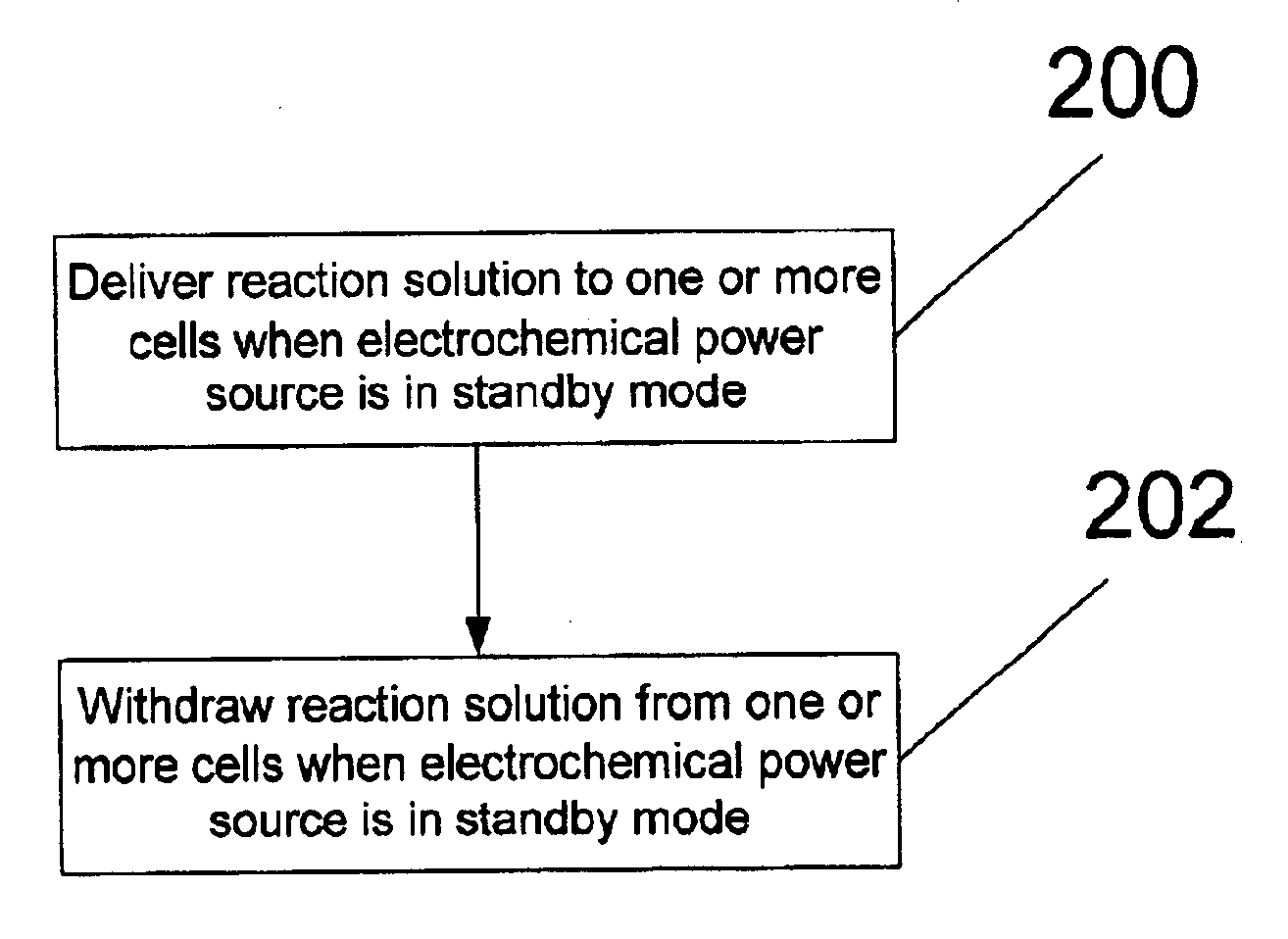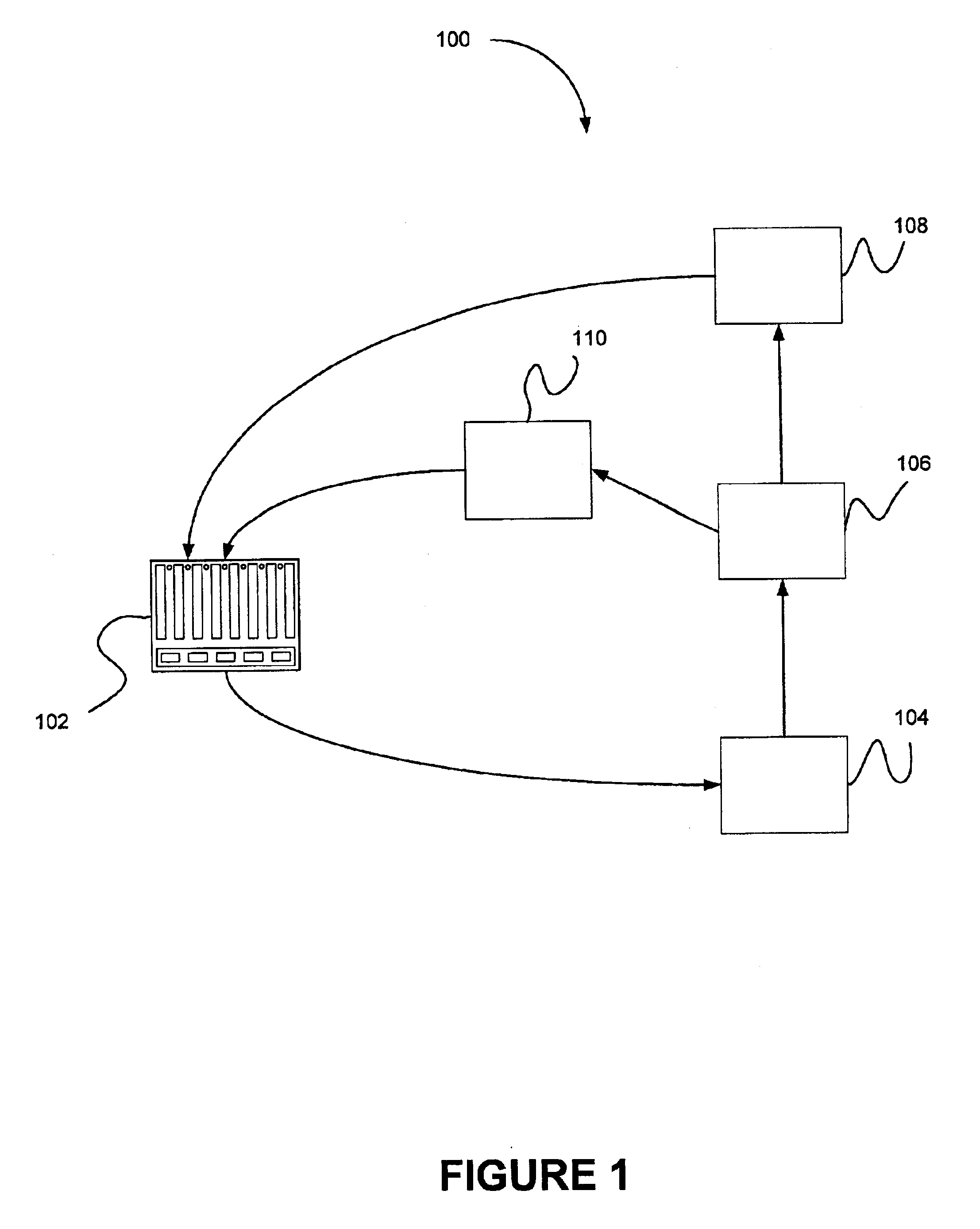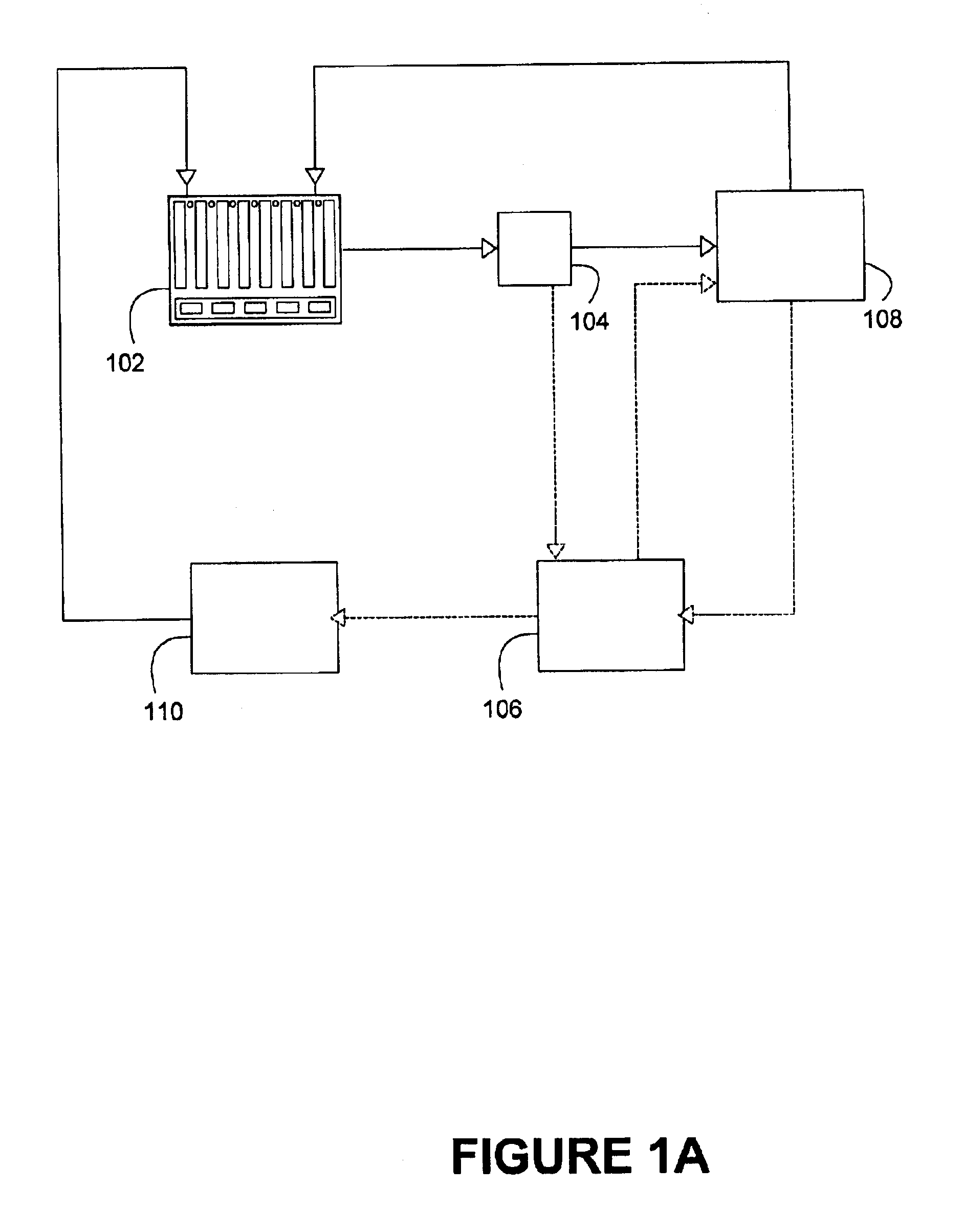Method of and system for flushing one or more cells in a particle-based electrochemical power source in standby mode
a technology of electrochemical power source and particle-based electrochemical, which is applied in the direction of separation process, basic electric element, electric apparatus, etc., can solve the problems of particle buildup, recirculation and electrochemical reaction can have undesired consequences, and reduce the flow of reaction solution through the anode bed
- Summary
- Abstract
- Description
- Claims
- Application Information
AI Technical Summary
Benefits of technology
Problems solved by technology
Method used
Image
Examples
example
FIG. 7 is a front view of an embodiment of an individual cell 700 within the power source 102 of a metal-based fuel cell. A particulate anode 708 is maintained within a cell cavity 704 of the cell. Within the cell cavity 704, when the cell is in standby mode, the particulate anode may undergo electrochemical dissolution (although at a much slower rate than the discharge mode) due to corrosion.
A first flow path for a recirculating flow of the reaction solution is provided through the anode. This flow path may be activated in the standby mode of operation. In the particular embodiment illustrated in FIG. 7, the first flow path extends from top to bottom through the anode, and is represented by the vertical arrows within cell cavity 704. When the power source is in the standby mode, reaction solution (usually essentially free of metal particles, although it is possible to include them) enters the cell at orifice 714, proceeds along conduit 716, and is distributed into the cell by flow ...
second embodiment
cell 700 is illustrated in FIG. 9. This embodiment is identical to the embodiment illustrated in FIG. 7, except that flow distributor 706 here includes a plurality 722 of fluid mechanical devices for allowing at least a portion of the reaction solution (and optionally particulate material) flowing along flow path 720 to enter the cell cavity, with the remainder exiting the cell cavity through orifice 724. As explained in U.S. Pat. No. 6,296,958, which is hereby fully incorporated herein by reference, the fluid mechanical devices should be configured in such a way that vortices are created in the spaces between adjacent ones of the fluid mechanical devices. These vortices draw reaction solution and optionally particulate material flowing along flow path 722 in a substantially uniform manner.
PUM
| Property | Measurement | Unit |
|---|---|---|
| flow rate | aaaaa | aaaaa |
| electrochemical potential | aaaaa | aaaaa |
| pressure | aaaaa | aaaaa |
Abstract
Description
Claims
Application Information
 Login to View More
Login to View More - R&D
- Intellectual Property
- Life Sciences
- Materials
- Tech Scout
- Unparalleled Data Quality
- Higher Quality Content
- 60% Fewer Hallucinations
Browse by: Latest US Patents, China's latest patents, Technical Efficacy Thesaurus, Application Domain, Technology Topic, Popular Technical Reports.
© 2025 PatSnap. All rights reserved.Legal|Privacy policy|Modern Slavery Act Transparency Statement|Sitemap|About US| Contact US: help@patsnap.com



